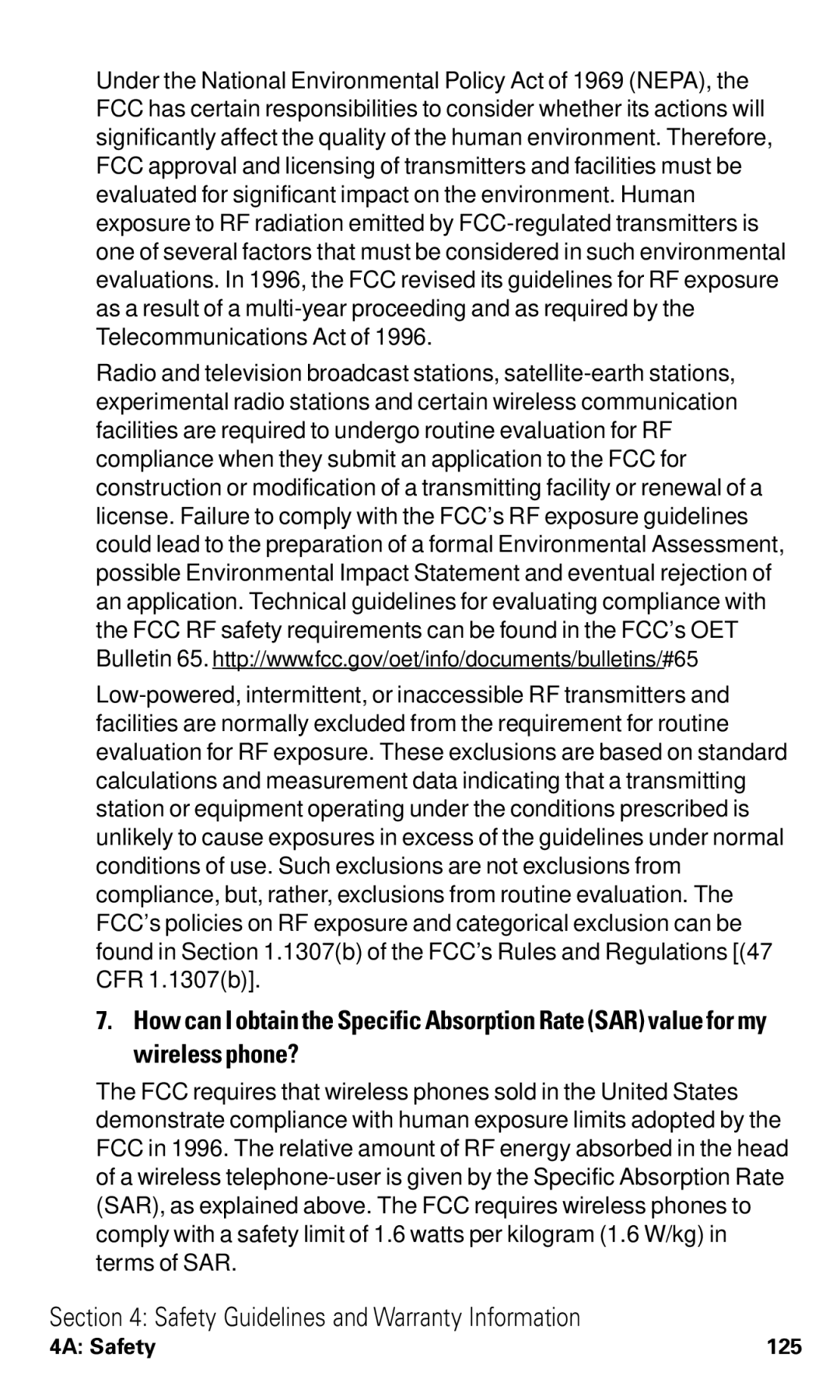Under the National Environmental Policy Act of 1969 (NEPA), the FCC has certain responsibilities to consider whether its actions will significantly affect the quality of the human environment. Therefore, FCC approval and licensing of transmitters and facilities must be evaluated for significant impact on the environment. Human exposure to RF radiation emitted by
Radio and television broadcast stations,
7.How can I obtain the Specific Absorption Rate (SAR) value for my wireless phone?
The FCC requires that wireless phones sold in the United States demonstrate compliance with human exposure limits adopted by the FCC in 1996. The relative amount of RF energy absorbed in the head of a wireless
Section 4: Safety Guidelines and Warranty Information
4A: Safety | 125 |
